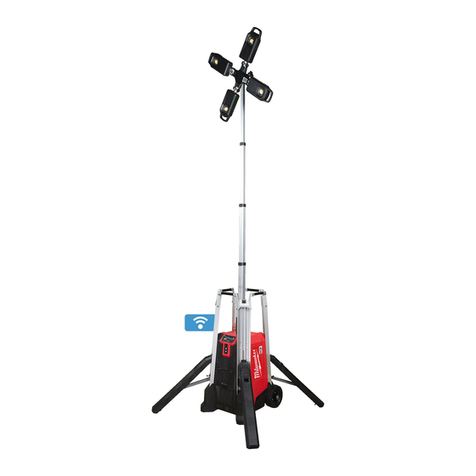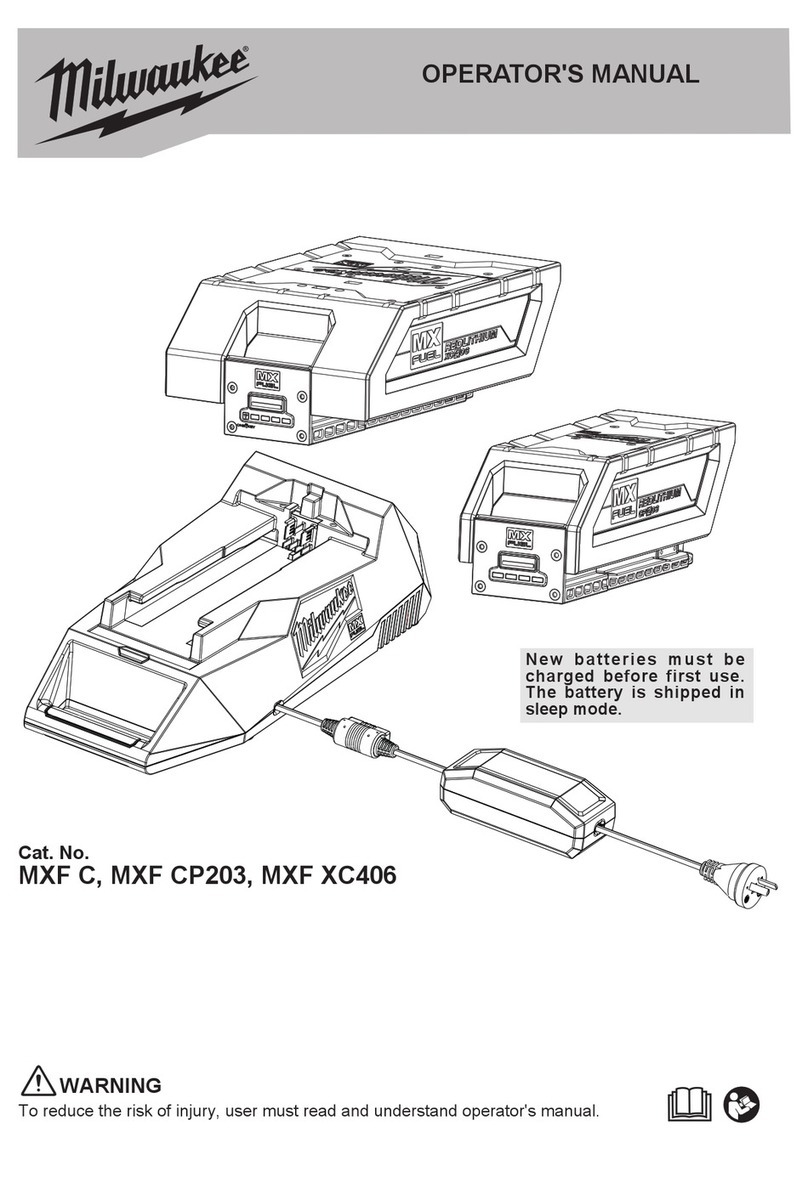
Page 1of 8MET P/N 58-97-0500
Lithium-ion Battery - Rechargeable
07A
SECTION 1: PRODUCT AND COMPANY IDENTIFICATION
Product Name: Lithium-ion Battery - Rechargeable
Product Numbers:
#48-11-0490; V4B: Rated 4 volts, 0.8g ELC, 10 Watt-hours
(Wh) maximum.
#48-11-1815; C18B; M18B; 982-2 (Albion); Li18 (OEM):
18v, 2.3g ELC, 27 Wh max.
#48-11-1820; M18B2: 18v, 3.0g ELC, 36 Wh max.
#48-11-1828; C18B; M18BX; Li18 (OEM): 18v, 4.5g ELC, 54
Wh max.
#48-11-1840; M18B4: 18v, 6.0g ELC, 72 Wh max.
#48-11-1830; V18B; MV18B: 18v, 4.5g ELC, 54 Wh max.
#48-11-2001; M4B2; 4V, 0.6g ELC, 8Wh max
#48-11-2401; C12B; M12B; 0700913615 (Wurth); 1004-3
(Albion); Li12B (OEM): 12v, 1.4g ELC, 18 Wh max.
#48-11-2420; M12B2: 12v, 1.8g ELC, 24 Wh max.
#48-11-2402; C12BX; M12BX; 0700913630 (Wurth); Li12BX
(OEM): 12v, 2.7g ELC, 36 Wh max.
#48-11-2440; M12B4: 12v, 3.6g ELC, 48 Wh max.
#48-11-2830; V28B; M28BX; Li28V (Wurth); Li-2-28V
(Wurth); Li28M (OEM): 28v, 6.3g ELC, 84 Wh max
Drawing Number: 58-97-0500
Issue Date: January 2013
Superseded Date: September 2012
Milwaukee Electric Tool Corporation Company Phone Number: 1-262-781-3600 or
13135 West Lisbon Road 1-800-729-3878
Brookfield, Wisconsin USA 53005-2550 Emergency Contact Number: 1-800-424-9300
www.milwaukeetool.com (United States Only) (Chemtrec)
For International: 1-703-527-3887
SECTION 2: HAZARDS IDENTIFICATION
EMERGENCY OVERVIEW
Appearance/Odor: Solid article, odorless
WARNING: No exposure during routine handling of product. Hydrofluoric Acid Exposure During
Fire Fighting: This information is given for the use of professional fire fighters responding to a
warehouse fire where fire from other materials may incinerate batteries. This section is provided solely
in case of exposure, during firefighting, to the combustion by-products.
Flammable: Organic components will burn if cell is incinerated. Combustion of cell contents may
cause evolution of Hydrogen Fluoride.
Material Safety Data Sheet
May be used to comply with
OSHA’s Hazard Communication Standard 29 CFR 1910.1200.
This standard must be consulted for specific requirements.































